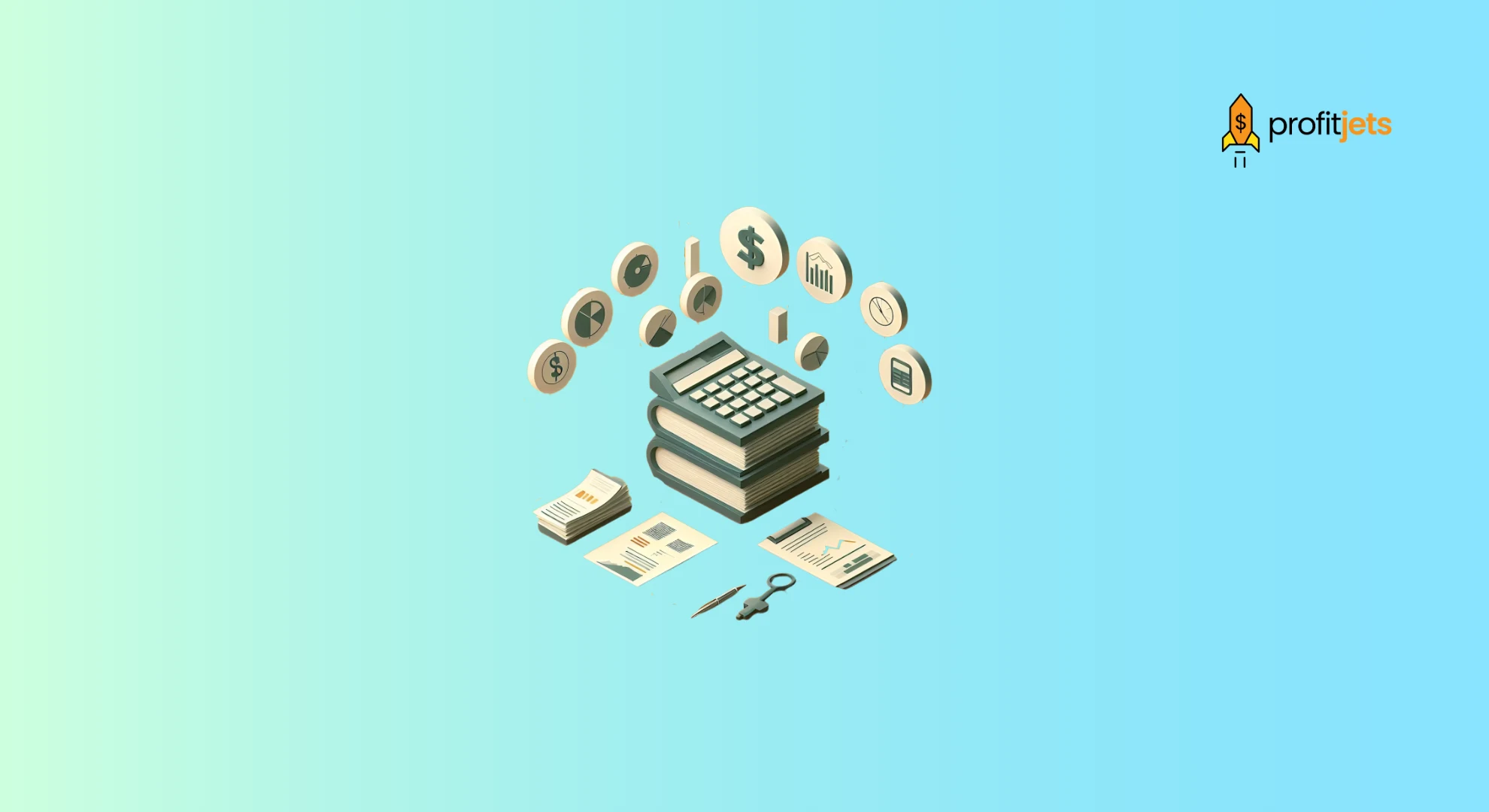Running a small business in the U.S. means wearing multiple hats: those of sales, customer service, operations, and finance. But one area that many entrepreneurs overlook until it becomes a crisis is invoice organization.
Disorganized Small Business Bookkeeping can lead to invoice chaos, which is a silent cash flow killer. A misplaced invoice, a late follow-up, or an unpaid bill might leave you chasing overdue payments, struggling during tax season, or scrambling to explain your financials to an investor or lender.
It’s key that all entrepreneurs understand the importance of financial records, and the process begins with organized invoicing. However, keeping invoices organized isn’t all about neat record-keeping. A simple bookkeeping task has a deeper functional implication; it translates to protecting your cash flow, staying compliant with the IRS, and maintaining a professional image with your clients.
Small business owners now have access to smarter tools, automation, and best practices that make managing invoicing easier.
Table of Contents
What happens if I don’t keep my invoices organized as a small business owner?
- You risk cash flow shortages, late fees, and missed growth opportunities.
- You may face penalties or complications during IRS audits.
- You’ll spend more time chasing paperwork instead of running your business.

Why is Invoice Organization and Bookkeeping for small businesses So Important?
Many small business owners underestimate just how much disorganized invoicing impacts their bottom line. Let’s break down why keeping your invoices in order matters:
- Smooth Cash Flow Management – Invoices are the lifeblood of your revenue cycle. When they’re sent late, misfiled, or overlooked, your payments are delayed, leaving you struggling to cover expenses.
- Faster Payment Cycles – A clearly structured invoice system means clients receive invoices promptly, with the right details, and reminders when due. This translates into faster payments and fewer overdue accounts.
- Easier Tax Preparation and Audit-Readiness – The IRS generally requires businesses to keep supporting financial records for at least three years. A messy invoice system makes tax season stressful and exposes you to audit risks. Organized invoices, on the other hand, give you peace of mind.
- Professional Image with Clients – Sending timely, branded, and error-free invoices shows clients you’re reliable and detail-oriented. It sets the tone for healthy business relationships.
What’s the Best Way to Digitally Organize Invoices?
Digital tools have become more affordable, more user-friendly, and more secure, making them the go-to solution for U.S. small business owners. Here are the essentials:
- Cloud-Based Accounting Software – Platforms like QuickBooks, Zoho Books, Wave, FreshBooks, and Xero allow you to create, send, and track invoices in one place. Many even integrate with your bank accounts, payment processors, and POS systems.
- Centralized Storage – Keep all invoices—whether created in software or uploaded from outside vendors—stored in one dedicated location. Cloud folders such as Google Drive, Dropbox, or OneDrive can serve as secure, searchable backups.
- Smart File Naming Conventions – Even the best tools won’t save you from chaos if your files aren’t labeled correctly. A simple naming system like: YYYY-MM-DD_ClientName_Invoice#
Just ensures invoices are easy to locate during tax time or client disputes.
What software should I use as a business owner to manage invoices as a U.S. small business in 2025?
- QuickBooks Online: Best for growing businesses needing advanced features.
- Wave: A strong free option for freelancers and very small businesses.
- Zoho Books: Affordable with strong automation features.
- FreshBooks: Ideal for service-based businesses needing time-tracking integration.
- Xero: Scalable, with excellent reporting and third-party app connections.
Each has its strengths, but the right choice depends on your budget, business size, and whether you need extras like payroll, expense tracking, or tax compliance.
How Should Invoices Be Categorized?
One of the biggest mistakes small business owners make is storing invoices in a single “catch-all” folder. While that may feel convenient, it quickly becomes overwhelming when you need to locate a specific document during tax season, a client dispute, or an audit. The solution is to build a simple categorization system that works for your industry.
Here are four proven ways to categorize invoices effectively:
- By Vendor or Client – Keep a separate folder for each client or supplier. This makes it easier to pull up a history of transactions, which is especially useful for repeat customers, long-term contracts, or vendor negotiations.
- By Payment Status – Create categories for Paid, Unpaid, and Overdue invoices. This gives you instant visibility into your cash flow and helps prioritize follow-ups. Some accounting software will even generate aging reports that show how long invoices have been outstanding.
- By Project or Service Type – If you run a service-based business (like marketing, consulting, or design), organizing invoices by project helps track profitability. Product-based businesses, on the other hand, may prefer to categorize by product line or department.
- By Date (Monthly, Quarterly, Yearly) – This structure is invaluable for tax preparation and financial reporting. Breaking invoices down into time-based folders allows you to spot revenue trends and reconcile accounts quickly.
What’s the easiest way to track unpaid invoices?
The easiest way is to use accounting software with built-in invoice tracking. Tools like QuickBooks, FreshBooks, and Zoho Books automatically flag unpaid and overdue invoices, send reminders, and generate aging reports. For very small businesses, even a well-structured Excel sheet or Google Sheet with filters for status and due dates can help—but automation reduces errors and saves time.
Can invoice organization really improve my small business’s cash flow?
Businesses that stay aware and in control of invoicing get paid faster, reduce the number of overdue accounts, and gain a clearer picture of their financial health. In fact, according to several small business surveys, companies using digital invoicing systems get paid up to 2–3 weeks faster than those relying on paper or email-based systems. That extra speed can mean the difference between struggling to cover payroll and having the cash available to reinvest in growth.

Here are our Pro Tips for U.S. Small Businesses- Designed to improve your records & Cash Flow Management
Managing invoices doesn’t have to be overwhelming. With the right mix of digital tools, processes, and discipline, you can create a system that saves time, reduces errors, and keeps your finances IRS-ready. Below are eight practical, up-to-date strategies every U.S. small business owner should implement in 2025.
1. Use Digital Invoicing & Cloud Storage
The majority of U.S. small businesses are moving to digital invoicing platforms that allow you to create, send, and track invoices in just a few clicks.
- Digital invoicing software streamlines billing, integrates with accounting systems, and even sends automatic reminders when payments are overdue.
- Cloud storage solutions such as Google Drive, Dropbox, or OneDrive ensure your invoices are securely backed up and accessible from anywhere—perfect for remote teams.
2. Standardize Invoice Content & Templates
One common cause of payment delays is incomplete or unclear invoices. Standardizing your invoice format makes life easier for both you and your clients.
- Always include critical details: invoice number, issue date, business and client details, itemized breakdown, payment terms, and purchase order (PO) numbers if applicable.
- Use consistent branding—logo, colors, and fonts—to reinforce professionalism and trust with clients.
Think of your invoice not just as a request for payment, but also as a reflection of your brand.
3. Keep Everything Centralized & Consistent
Scattered invoices create headaches during audits or tax season. Instead, adopt a “single source of truth” approach:
- Store all invoices—both digital and scanned copies of physical ones—in one centralized system.
- Digitize paper invoices using mobile scanning apps or OCR tools to make them searchable.
- Apply a consistent naming convention
So files are easy to locate months (or years) later.
4. Organize by Category & Status
Once invoices are centralized, structure them in a way that makes day-to-day management simple. Organize them under a broad classification, by vendor/client, by payment status, by project or service type, or by date.
Digital software often automates this categorization, while physical invoices can be managed using labeled folders or color-coded filing systems.
5. Leverage Automation & Recurring Workflows
Automation is one of the biggest game-changers in 2025. Instead of manually generating and sending invoices every month, you can:
- Set recurring invoices for subscription or retainer clients.
- Schedule automated reminders to follow up on unpaid bills.
- Use advanced automation—like OCR (optical character recognition) or AI tools—that extract data from receipts and invoices, eliminating manual entry.
This not only speeds up your workflow but also reduces human error.
6. Review, Reconcile & Retain
Organization is not a one-time task—it’s an ongoing process. To stay in control:
- Reconcile invoices against bank statements regularly to catch errors early.
- Maintain backups on both cloud and external drives.
- Follow IRS requirements: generally, keep invoices for at least 3 years, and longer if connected to property or deductions.
- Conduct quarterly reviews of your invoicing process to ensure efficiency and compliance.
7. Separate Finances & Use Proper Accounting Structures
Mixing personal and business finances is a common mistake that complicates invoice management. Instead:
- Open separate bank and credit accounts for your business to simplify tax preparation and protect your liability status.
- Build a chart of accounts in your accounting software to properly categorize expenses and income streams. This makes reporting cleaner and helps you make smarter financial decisions.
8. Draw from Real-World Insights
Sometimes the best advice comes from fellow entrepreneurs. Small business owners on Reddit and other forums have shared practical insights:
- “Wave stands out as a super user-friendly choice with professional templates and easy payment tracking.”
- “Zoho Books has been great for automation—affordable and reliable.”
- “Try the Snaptobook app… it extracts receipt details line by line. No more manual data entry!”
These peer experiences highlight that even free or budget-friendly tools can deliver powerful results when paired with smart workflows.
9. Outsourced Bookkeeping Services:
An outsourced bookkeeping business can take control of your invoicing process and all things that follow, i.e., categorization, bank reconciliation, accounts receivable and accounts payable management, bank reconciliation and more. Outsourced bookkeeping services also provide CFO-level guidance, which might help you set your operations on track for operational optimization, project cash flows, and keep your books of accounts audit-ready.
Outsourced Bookkeeping for small businesses is also a cost-effective solution when compared to hiring and managing an accounts team in-house

Conclusion
Nothing helps keep a business organized than organized books of accounts. This crucial function begins with invoice management. By taking advantage of digital tools, forming a structure, and handling one crisis at a time, organizations can create a seamless workflow. An outsourced bookkeeping company, with experience with several small businesses and varied industries, can help you streamline your invoicing infrastructure.
Profitjets is a financial expert that provides virtual CFO services at a fraction of a full-time CFO’s charges. We take pride in our 15+ years of experience and the satisfaction of over 600 customers. We also provide outsourced accounting and bookkeeping, tax consultation, tax filing, tax advisory services, and outsourced bookkeeping for CPAS. Get in touch with us now for a custom deal.
FAQs: Organizing Invoices for Small Businesses in the U.S. (2025)
1. What is the best way to organize invoices for a small business in the US?
The best way to organize invoices in 2025 is to go digital and use accounting software designed for small businesses. Tools like QuickBooks, FreshBooks, Wave, and Zoho Books allow you to create, send, and store invoices in one place. For better organization, categorize invoices by client, project, payment status, and date. If you still receive paper invoices, scan them into a cloud-based folder system with consistent file naming (e.g., YYYY-MM-DD_Client_Invoice#). This approach ensures invoices are always searchable, IRS-compliant, and audit-ready.
2. Which invoice software is most affordable for startups and freelancers in 2025?
For U.S.-based startups and freelancers in 2025, Wave remains one of the most affordable invoicing tools because it’s free and still offers professional invoice templates and payment tracking. Zoho Invoice is another low-cost option with automation features. FreshBooks is slightly more expensive but is excellent for freelancers who bill by time and need integrated time-tracking. Choosing the right software depends on your budget, whether you need recurring invoicing, and whether you want integrations like payroll or expense tracking.
3. Can outsourced bookkeeping firms help small businesses manage invoices?
Yes. Many outsourced bookkeeping firms in the U.S. provide complete invoice management services. They can create, track, and reconcile invoices on your behalf, ensuring your books stay accurate and cash flow remains steady. Outsourcing can be especially valuable if you don’t have time to manage invoices yourself or want to prepare for IRS audits, investor reviews, or loan applications. This option often costs less than hiring an in-house accountant and provides access to professional expertise.
4. Is cloud storage safe for storing invoices in 2025?
Yes. Cloud storage is not only safe but also the preferred method for invoice storage in 2025. Services like Google Drive, Dropbox, OneDrive, and built-in accounting software storage use encryption and two-factor authentication to protect financial data. Storing invoices in the cloud also means they are backed up, accessible from anywhere, and easier to share with accountants or auditors. For extra security, small businesses should also keep a secondary backup on an external hard drive.
5. What’s the cheapest way to organize invoices if I run a very small business?
The most affordable way to organize invoices as a very small business is to use free invoicing software like Wave or a combination of Google Sheets/Excel and cloud storage. Free tools offer professional-looking invoices, track payments, and keep records organized, all without monthly costs. If you’re just starting, you can also scan receipts and invoices with free apps and store them in Google Drive or Dropbox folders labeled by client, date, and payment status. As your business grows, you can upgrade to paid solutions like QuickBooks or Zoho Books for more automation.










